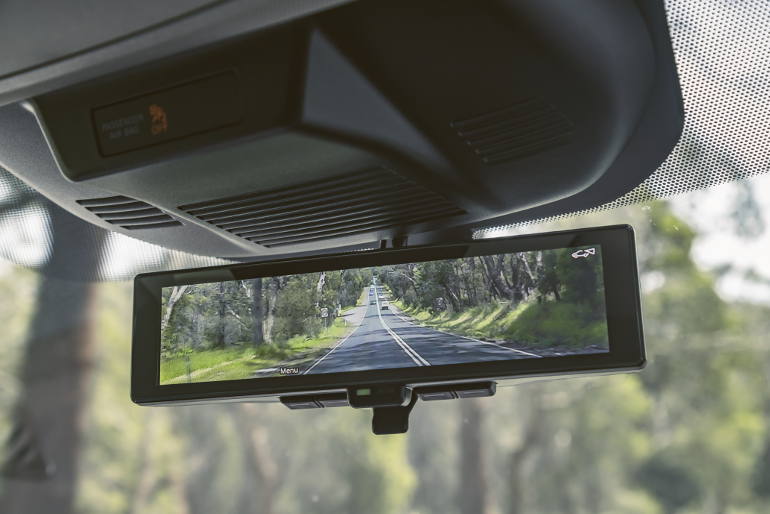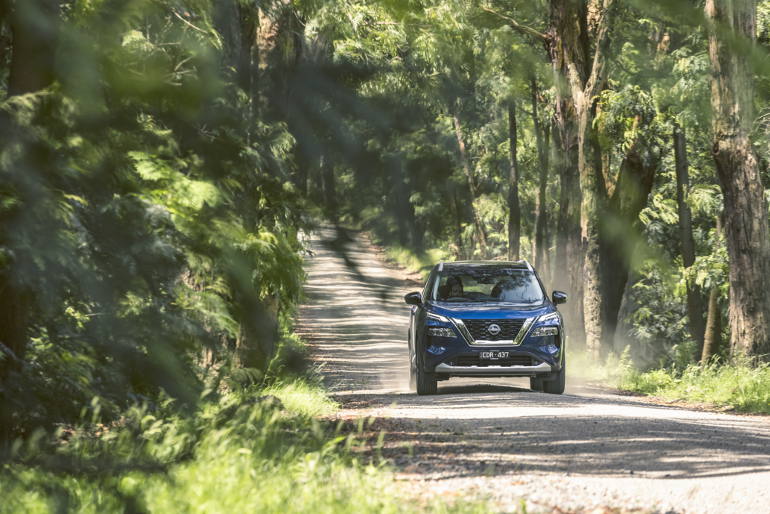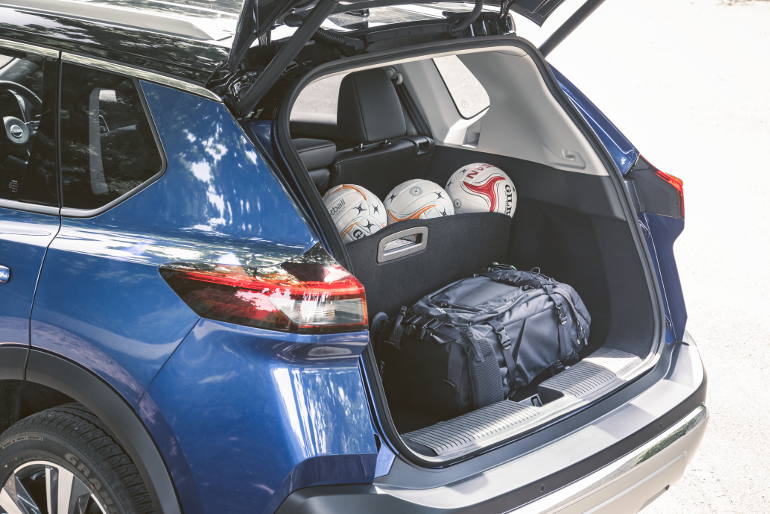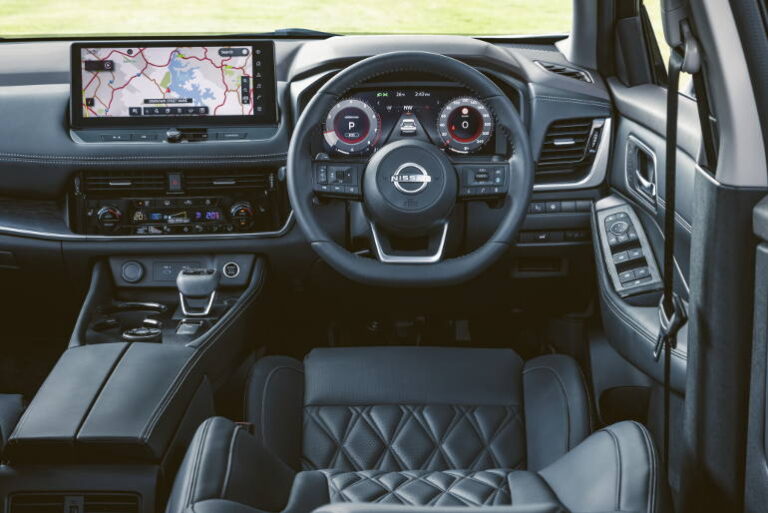It must be with immense relief that Nissan has launched the latest model of its medium sized SUV: the X-Trail.
It is the fourth generation of the vehicle that first came here in 2001 and is built on an all-new platform which it will share will the soon to be released Qashqai.
Supply difficulties have limited Nissan X-Trail sales for the past two years. As at October 2022 sales of X-Trails are down 44% compared to 2021 which was not a great year either.
The X-Trail has been the mainstay of the Nissan line up since 2001 although recent COVID and supply difficulties have meant that their Navara ute is now significantly ahead in year-to-date figures in 2022 mainly because of the decline in X-Trail sales.
Is Fleet a target market?
Nissan presented the new X-Trail to the motoring press and emphasised that their target markets were firstly young families and then secondly to empty nesters, but it still has a role in the fleet market.
Of course, there is always novated leases, but a medium sized SUV is also a practical car for moving people and materials, and any new vehicle can present well for a business.
The X-Trail is more likely to be a part of major fleets than Nissan’s larger Pathfinder SUV, which is also being released a week after the X-Trail. But while the new X-Trail is a comfortable, well-made vehicle with many features, the Pathfinder’s specifications indicate that it is more aimed at large families and is less likely to be a practical runabout fleet vehicle.
The latest generation X-Trail comes with the same four specification levels as the previous model:
- ST
- ST-L
- Ti
- Ti-L
Aspects that might suit a fleet operator
The X-Trail has gained a five-star ANCAP safety rating for all specification levels. Standard safety features from all models include:
- Predictive Forward Collision Warning,
- Intelligent Cruise Control with Traffic Sign Recognition,
- Lane Departure Warning and Prevention,
- Rear Cross Traffic Alert and
- Rear Auto Emergency Braking (with pedestrian and cyclist calibration),
- Junction Assist, and
- Driver Attention Alert.
While not available in the base model, all of the other three variants come with Nissan’s ProPILOT which they describe as a semi-autonomous system.
This is basically technology that is available on many other cars and includes lane keep assist (where the car applies mild correction through the steering wheel when you wander out of your lane without using your indicator) and intelligent cruise control that can bring a vehicle to a stop if the vehicle in front has come to a stop.
Lane keep assist relies on the detection of lane marking and while the X-trail was consistent on high quality roads with good lane lines, but it struggled when the conditions were sub-optimal. My perception was that the Nissan system appeared to lose detection more quickly than some other brands such as Kia and Hyundai. It could lead to the vehicle beeping a warning rather frequently.
The two top specification models have an intelligent rear view mirror (you can choose to have a normal mirror of the view from a camera from the rear of the car which gives a wider view and is not blocked by anything in the car).

Performance and driving impressions
The new X-Trail has enough technology and comfort features to expect a good ride and it certainly does not disappoint. A strong overall impression was of the confidence and quietness in which it handles a range of conditions which makes it a very good vehicle for both urban and rural situations. It gives a feeling of good road manners, modern design, and being well-constructed, without aggressively transmitting every bump in the road.
All models continue with the same 2.5-litre four-cylinder non-turboed petrol engine but they have lifted the power output by 9kW to 135kW, and torque is boosted by 18Nm to 244Nm.
All models also have a CVT gearbox which is generally not a favourite with those who like a spirited drive, but they have improved it a little and while our drive was relatively short, it was long enough to realise that in most situations it did not produce an intrusive affect that is noticeable in some other brands and in early models in general.

The two lower variants (ST and ST-L) come in either 2WD or 4WD while the top two variants come in 4WD only.
Nissan has used lighter materials in some panels such as a composite rear tailgate and aluminum in the front and rear doors, front mudguards and bonnet. Nonetheless the overall car weighs a little more than the previous model, but they have improved the fuel consumption by 0.5 l/100 km which is now 7.4l/100 for the 2WD and 7.8l/100 for the AWD.
The power-steering set-up has also been upgraded, with a “quicker” rack ratio offering improved response, better feeling around the central part of the steering range and reduced friction.
A twist-dial Drive Mode Selector on 4WD models provides five driving modes: Off-Road, Snow, Auto, Eco and Sports – with paddle-shift controls on the steering wheel.
Nissan will be introducing a hybrid model in “early 2023”. Unlike other hybrids in the market this one uses the internal combustion (ICE) petrol engine only to charge the battery. This is similar to a diesel locomotive and means that the ICE can be tuned for greater efficiency in a narrower rev range.
Interior
The X-trail has good leg room, slightly increased from previous model. Access is improved with the rear doors opening to 85 degrees. The rear cargo area at 585 litres is very good for this class with the second row of seats in the up position.
The base model has average information screens and layout but is quite easy to adjust to. Upper models have bigger infotainment screens with the top two specs having a head up display.

Features
The features that particularly define the base model include:
- Rear camera
- 7” TFT Advanced Drive-Assist® Display instrument cluster
- Steering wheel paddle shifters
- Hill Descent Control (4WD only)
- 6-way manual driver’s seat control with power lumbar operation
- Roof rails
- 60/40 split rear seats
- 2 USB ports for front seats, 2 for rear seats
- 8” infotainment with DAB+ audio and 6 speakers, wired for Apple CarPlay® and Android AutoTM
- 17” alloy wheels
- Temporary spare wheel
Stepping up to the ST-L adds a range of features, the most notable being:
- 10-way powered driver’s seat including lumber support
- 20/40/20 split rear seats
- Sliding rear seats
- Heated front seats
- Luggage board system (16 configurations)
- Dual-zone air conditioning
- Front parking sensors
- Tyre pressure monitoring system
- 18” Alloy Wheels
- ProPILOT with Lane Keep Assis
The Ti offers in addition:
- Intelligent rear View Mirror (you can choose the have the interior mirror a camera view from the rear of the car)
- Adaptive matrix LED headlight system
- Auto wipers
- 10.8” head-up display
- 12.3” TFT Advanced Drive-Assist® Display instrument cluster
- 12.3” touchscreen display with wireless Apple CarPlay® + wired Android AutoTM and wireless device charging
- 10-way power-operated passenger’s seat with power lumbar support
- Ambient lighting (console)
- Wireless smartphone charging pad
- Tri-zone air conditioning
- Panoramic sunroof, with tilt-slide front sunroof section
- Power tailgate
- 19” alloy wheels
The top of the range Ti-L goes even further
- Reverse tilt power mirrors with memory function
- Heated steering wheel
- Heated rear seats
- Memory function for front seats
- 10-speaker Bose audio system
- Motion sensing power tailgate with position memory
- Remote engine start
- Rear door sunshades
The new X-Trail is also available with a third row of passenger accommodation.
Loyalty
When supply has been so restricted it becomes a real test of loyalty to the brand. Martin Longayroux, the Chief Marketing Manager at Nissan for X-Trail, Pathfinder and EV, noted the following:
“I think customer loyalty is obviously always important and even more so now with the supply challenges that we’ve got. But we’ve got quite a strong order bank on all of our vehicles, especially the new ones like the X-Trail Pathfinder, Qashqai, the Z, which is launch Patrol.
“So that shows that the loyalty is definitely there. I mean it’s always something that you want to be even, even stronger. But I think with everybody you will lose some sales for sure because no matter how loyal somebody is, then the need and urgency of a vehicle will ultimately override that as well. I mean, if you need something, you’ll take it…if your car breaks down, it’s like, oh, I still got to ferry my children around somewhere, so I’ve got to get something soon.
Nissan says it has advanced order for the following cars that they are releasing now and in the near future:
- X-Trail- 2,500 +
- Qashqai – 1,700 +
- Pathfinder – 1,100 +
Pricing
The pricing at the time of the launch is:
- ST 2WD – $36,750
- ST 4WD 7-seat – $39,790
- ST-L 2WD – $43,190
- ST-L 4WD 7-seat – $46,290
- Ti 4WD – $49,990
- Ti-L 4WD – $52,990
* Manufacturer Suggested Retail Prices (MSRP) are provided for media purposes only and do not include premium paint, statutory charges or other on-road costs. ^$700 surcharge for premium paint; $1200 surcharge for two-tone paint







